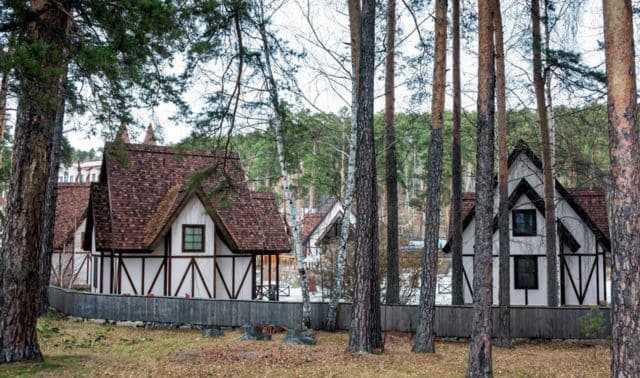Sign up for the Family Tree Newsletter! Plus, you’ll receive our 10 Essential Genealogy Research Forms PDF as a special thank you.
Get Your Free Genealogy Forms
"*" indicates required fields

Here’s how, after searching for more than a decade, genealogy expert Rick Crume finally found baptismal and other church records for his ancestor Leonard Slip and his family.
Depending whether records for your ancestor’s parish are online (lucky!), or in a German church or archive, you may or may not have to go through all six steps we’ve outlined to get those records.
1. Find the hometown.
A county history says Leonard Slip was born Aug. 20, 1748, at Frankfort-on-the Cross, Germany, and was indentured to a potash maker after arriving in New York City in 1767. I couldn’t find Slips in Germany or a place called Frankfort-on-the Cross. A breakthrough came when German genealogy expert Ernest Thode suggested that Leonard Slip and an immigrant named Johann Leonhard Schloepp might be the same man.
ADVERTISEMENT
Following that lead, I discovered a 1791 notice in both a Philadelphia German-language newspaper and a New York English-language newspaper. Authorities in Obersteinbach, Germany, were looking for John Leonard Schloepp, a native of “Mt. Taschendorf, a borough in the Franconian circle of the German empire, appertaining to the Bailiwik Obersteinbach … having set out for America in the year 1766 … Schloepp has long ago given notice to his parents by a letter of the 16th June 1774, of his being employed as Cooper in a potash-fabric at New-York … ” Schloepp stood to inherit some money from his father.
Using maps and gazetteers, I discovered that Markt Taschendorf and Obersteinbach are about four miles apart in the province of Middle Franconia (Mittelfranken) in the state of Bavaria. A village called Frankfurt is located right between the two. Leonard Slip and Johann Leonhard Schloepp were clearly the same guy.
2. Search for church records.
I set out to find a record of his baptism, which would likely name his parents. Assuming Leonard was Protestant, I focused on Lutheran parish records.
ADVERTISEMENT
According to ProGenealogists’ gazetteer of Bavaria, the Evangelical parish for Frankfurt is Obersteinbach, and for Markt Taschendorf, the parish is Taschendorf. The German Society for Computer Genealogy’s website states the Lutheran records of Obersteinbach are still at the local church, but it doesn’t say where Markt Taschendorf’s Lutheran records are.
First, I checked the FamilySearch catalog and found no microfilmed church records for those parishes or any of the three towns associated with Leonard. So I would have to contact the churches in Germany.
Back in 2002, I found the website of the Lutheran Church of Markt Taschendorf and I sent a letter in German, along with a money order for 15 euros (about $15 then), to request an extract from the baptismal record of Johann Leonhard Schloepp, born in 1748. The pastor there couldn’t find the record, so he forwarded my letter to the pastor of the Lutheran church at Obersteinbach.
That pastor emailed me that he couldn’t find a record, either, though he did say a Schloepp family belonged to his church. Although this response came five months after I sent my letter, the pastor was gracious and even wrote in English. I was almost positive I had the right name, date and place, but I didn’t find the record.
Ten years later, armed with the knowledge that Catholic churches sometimes recorded Protestants, too, I tried Catholic church records. Frankfurt is in the Catholic parish of Scheinfeld, according to gazetteers. I emailed that parish and received a response the next day that records older than 100 years are in the diocesan archives in Bamberg.
3. Contact archives.
Then I emailed that archive and the next day received a reply referring me to a professional researcher. I hired the researcher, who wrote only in German, to look for Leonard’s baptismal record in 1748, his father’s burial record in 1791 and any other information on the immediate family, and to send me extracts.
A couple of weeks later, she emailed her findings: Johann Leonard Schlepp’s baptism record dated Aug. 21, 1748 (the day after Leonard Slip’s date of birth), his parents’ 1741 marriage record, and the 1742 baptism and 1746 burial records for Leonard’s brother.
Translated, Leonard’s baptismal record reads “1748. August 21. Baptized Johann Leonard [son of] Georg Schlepp of Frankfurt and wife Magdalena. Johann Leonard Kaltenbeck of Taschendorf, godfather.“ In these records, written in Latin, the name is spelled Schlepp, not Schloepp.
It was exciting to finally have firm evidence of my ancestor’s German origins, but it didn’t come cheap. The research took two hours at 50 euros (about $65) per hour. The researcher requested payment by cash with a registered letter, by bank transfer or by check. Registered mail would cost $12.95 plus postage. If I paid by check, the researcher would charge a 15-euro fee (about $19.50). I opted to send a money transfer through the online money transfer service Xoom. The total charge, including a currency conversion fee, was $138.32.
I also wanted digital copies of the church records, but only an archivist could make them. The researcher requested the copies for me and a few days later the archives sent them as email attachments. The total cost for the four digital copies was 10 euros (about $13.75).
A version of this article appeared in the October/November 2013 Family Tree Magazine.
ADVERTISEMENT




